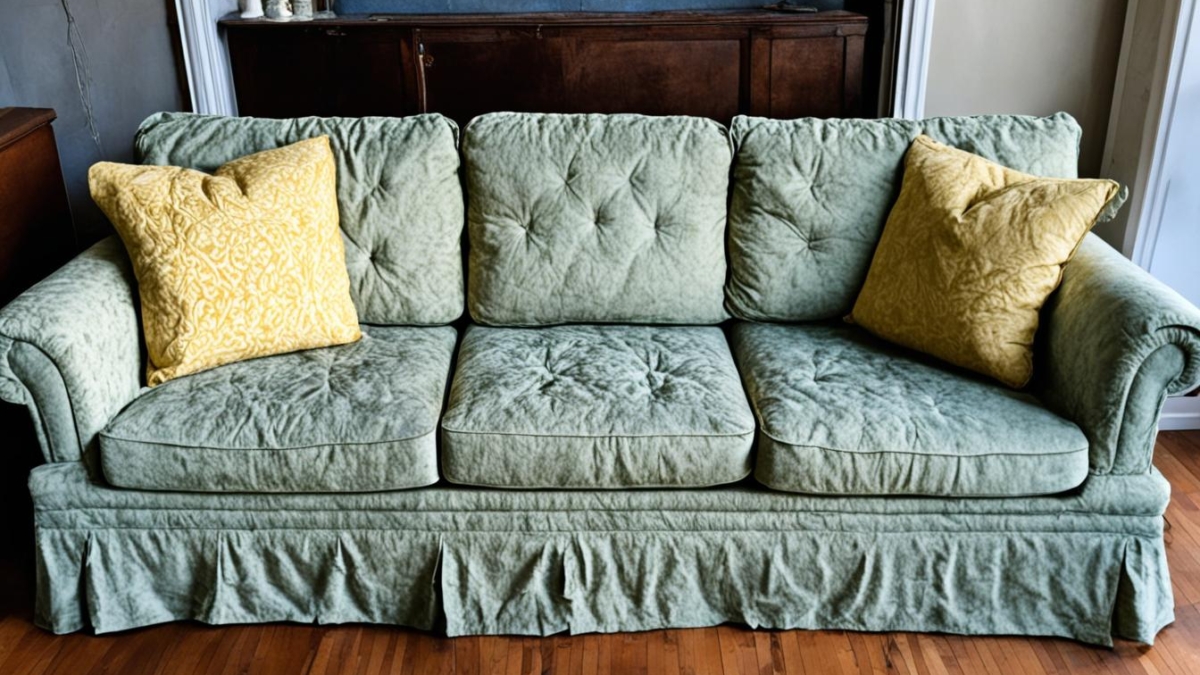Welcome to our guide on fixing a sagging couch! If you’ve noticed that your couch has lost its support and comfort over time, don’t worry – you’re not alone. Sagging couches are a common issue faced by many homeowners. Fortunately, there are simple solutions available that can help restore your couch to its former glory.
In this article, we will explore the causes of a sagging couch and provide you with step-by-step instructions on how to fix it yourself. We will also discuss professional solutions if you prefer a hands-off approach or if the DIY methods don’t yield satisfactory results.
So whether you’re looking to save money by fixing your couch yourself or seeking the expertise of a professional, we’ve got you covered. Let’s get started on reviving your sagging couch and reclaiming your comfort!
Causes of a Sagging Couch
In this section, we will explore the various reasons why a couch may start sagging over time. Understanding the underlying causes is crucial in identifying the most effective approach to fix your sagging couch.
One common cause of a sagging couch is worn-out cushions. Over time, the foam or springs within the cushions can deteriorate, losing their resilience and support. This can lead to sinking and sagging in the seat area, making the couch uncomfortable to sit on.
Another factor that can contribute to a sagging couch is a weak or damaged frame. When the frame loses its structural integrity, it can no longer provide adequate support to the cushions and upholstery. This can result in sagging and unevenness in different areas of the couch.
Excessive weight or improper weight distribution can also cause a couch to sag. Placing heavy objects or repeatedly sitting in specific spots can put excessive pressure on certain areas, leading to sagging over time.
Poor quality or worn-out suspension system is another potential cause of a sagging couch. If the springs or webbing used to support the cushions and provide bounce are of low quality or have worn out, it can result in sagging and decreased comfort.
Additionally, environmental factors such as humidity and temperature variations can impact the integrity of the materials used in the couch. For example, excessive humidity can cause the wood frame to swell or warp, compromising its stability and leading to sagging.
By identifying the specific cause of your sagging couch, you can take the necessary steps to address the issue effectively. In the next section, we will discuss various DIY methods you can use to restore your couch’s comfort and eliminate sagging.
DIY Methods to Fix a Sagging Couch
If you’re looking to restore the comfort and functionality of your sagging couch without breaking the bank, there are several simple yet effective do-it-yourself methods you can try. These techniques will help provide the necessary support and cushioning to bring your couch back to life. Follow these step-by-step instructions to fix your sagging couch:
Add Support
One common cause of a sagging couch is a lack of support in the seating area. To address this, you can add additional support by inserting wooden dowels or slats underneath the cushions. Measure the length and width of the seating area, then cut the dowels or slats to fit. Place them evenly throughout the seating area, ensuring they provide support where needed. This extra reinforcement will help prevent further sagging and distribute weight evenly.
Replace Worn-Out Cushions
Over time, the cushions on your couch can become worn out, leading to sagging and discomfort. If your couch cushions are no longer providing adequate support, it may be time to replace them. Measure the dimensions of the cushions and purchase new foam or filling material that matches the size. Remove the old cushions and insert the new ones, making sure they fit snugly. This simple replacement can make a world of difference in the overall support and comfort of your couch.
Tighten Loose Springs
Loose or sagging springs can also contribute to a sagging couch. If you suspect that loose springs are the culprit, carefully flip your couch over to access the underside. Locate the loose springs and use pliers to tighten any loose connections or attach them to the frame. Be cautious while working with springs to avoid injury. Tightening the springs will help provide the necessary tension and support to restore the shape of your couch.
By following these DIY methods, you can effectively fix a sagging couch and bring back its original comfort and functionality. However, if your efforts do not produce satisfactory results or if you prefer a more hands-off approach, it may be worth considering professional solutions. In the next section, we will explore the options available for repairing a sagging couch with the help of upholstery and furniture repair services.

Professional Solutions for a Sagging Couch
If the DIY methods have failed to restore your sagging couch to its former glory, don’t worry. There are professional solutions available to help you fix the problem. Hiring a skilled upholstery or furniture repair service can provide the expertise and tools needed to tackle even the most challenging couch sagging issues.
One option is to contact the original couch manufacturer or a local furniture store that offers repair services. These professionals have experience working with your specific couch model and are knowledgeable about its construction. They can assess the damage and recommend the most appropriate course of action, which may involve replacing worn-out springs or reinforcing weak support structures.
Another alternative is to hire an independent upholstery specialist or furniture repair expert. These professionals often have a wide range of skills and knowledge that allows them to work on various types of furniture. Before hiring anyone, it’s important to research their qualifications, read customer reviews, and ask for references. This way, you can ensure quality and reliable service for your sagging couch.


Add a Comment